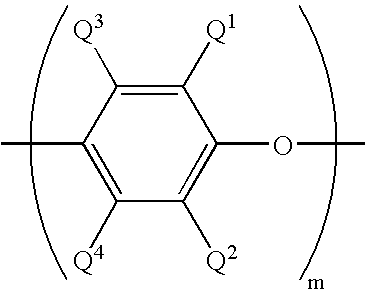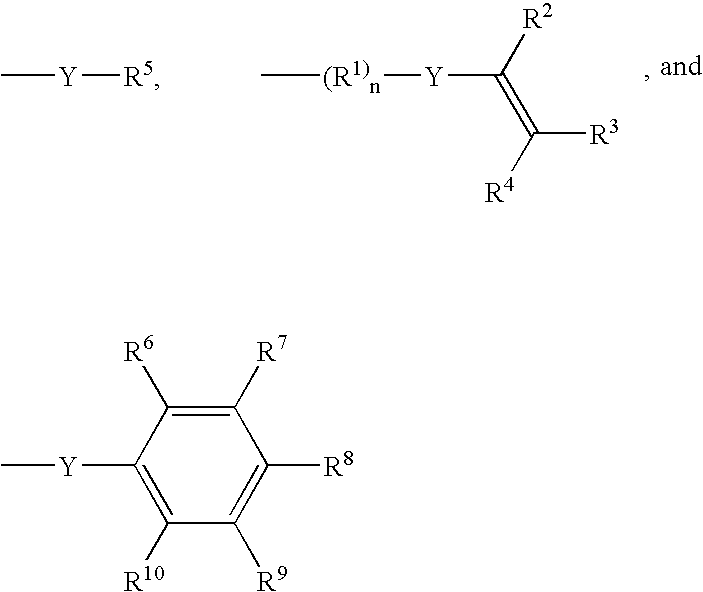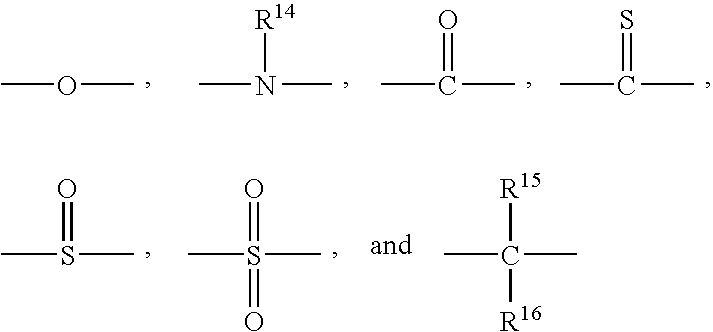Poly(arylene ether) compositions and articles
a technology of poly(arylene ether) and compositions, applied in the field of poly(arylene ether) compositions and articles, can solve the problems of reducing the effectiveness of many cured thermosets, requiring the use of greater amounts of non-halogenated flame retardants, and brittle thermosets
- Summary
- Abstract
- Description
- Claims
- Application Information
AI Technical Summary
Benefits of technology
Problems solved by technology
Method used
Image
Examples
examples 1-4
, COMPARATIVE EXAMPLES 1-8
[0072]The following examples illustrate the advantageous flame retarding action provided by the combination of a trihydrocarbylphosphine oxide and a nitrogen-containing flame retardant.
[0073]All flame retardant compositions were tested with the thermoset resin composition presented in Table 1, where all component amounts are expressed in parts by weight (pbw). Triallyl isocyanurate inhibited with 500 parts per million by weight tert-butylhydroquinone was obtained from Degussa Corporation. The poly(arylene ether) was a methacrylate-capped poly(2,6-dimethyl-1,4-phenylene ether) having an intrinsic viscosity of about 0.12 deciliter per gram as measured at 25° C. in chloroform, obtained as PPO* SA5587-111 from GE Plastics. Glass fiber having a diameter of about 14 micrometers and an initial length of about 4 millimeters, obtained as 497-14C from Owens-Corning. The peroxide curing promoter, 2,5-bis(tert-butylperoxy)-2,5-dimethylhexane (CAS Reg. No. 78-63-7), was...
PUM
| Property | Measurement | Unit |
|---|---|---|
| Temperature | aaaaa | aaaaa |
| Temperature | aaaaa | aaaaa |
| Fraction | aaaaa | aaaaa |
Abstract
Description
Claims
Application Information
 Login to View More
Login to View More - R&D
- Intellectual Property
- Life Sciences
- Materials
- Tech Scout
- Unparalleled Data Quality
- Higher Quality Content
- 60% Fewer Hallucinations
Browse by: Latest US Patents, China's latest patents, Technical Efficacy Thesaurus, Application Domain, Technology Topic, Popular Technical Reports.
© 2025 PatSnap. All rights reserved.Legal|Privacy policy|Modern Slavery Act Transparency Statement|Sitemap|About US| Contact US: help@patsnap.com



